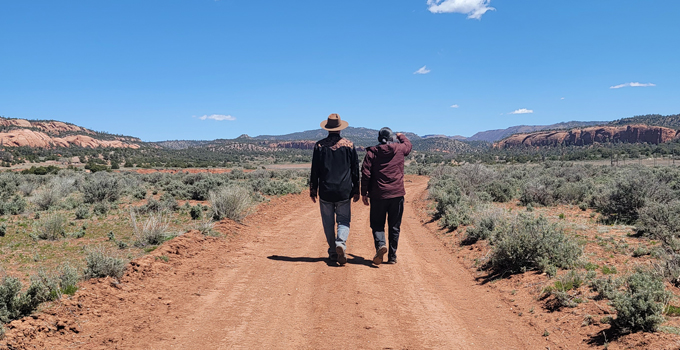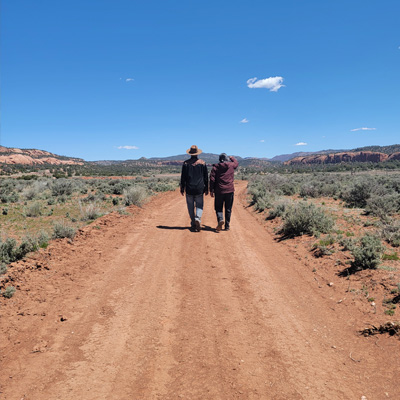
On a Friday morning in early May, a small group of University of New Mexico students, faculty members and the CEO of UNM Health System climbed into a van and went on a road trip none of them will soon forget.
Laura Burton, PhD, who leads the Pre-Health Scholars certificate program at the Health Sciences Rio Rancho campus, designed the program to help students develop empathy and communications skills before pursuing further health education or a career in health care.
It was just one of a series of journeys designed to offer students and faculty invaluable, firsthand experience of health practices and beliefs of Native peoples in New Mexico.
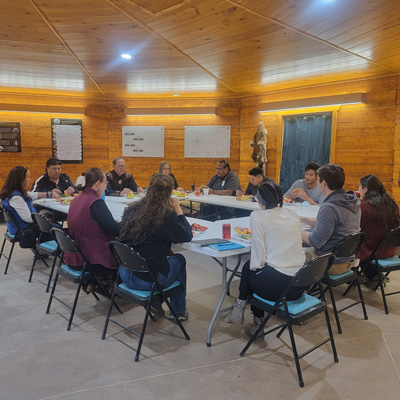
The May trip was to the Navajo Nation, where the UNM visitors were able to learn from Navajo/Diné nurses, doctors and other health care professionals over two days. She added that the goal of the program is to then have students apply the skills they learned in real-world settings.
The excursion began with a visit to the Navajo Preparatory School in Farmington, where students met with faculty and Lyle Lee, RN, the school’s nurse.
Chenoa Bah Stillwell-Jensen, a UNM instructor, and Douglas Ziedonis, MD, MPH, executive vice president for Health Sciences and CEO of the UNM Health System, as well as his wife, Patrice, were also in attendance. According to Burton, all the field trip attendees were introduced to the school’s special song about strength, all sung in Diné.

The UNM group then met with several Shiprock Indian Health Service staff before departing for the Clark family home in Asaayi on the Navajo Nation. Gwen and Ferlin Clark, PhD, opened their home to the students and taught them about different parts of Diné philosophy, while cooking dinner outside.
Burton said they learned that, for the Navajo/Diné people, the use of corn goes far beyond nutrition. It’s also an important part of Navajo prayer and represents the spirit of emotional being, the energy of happiness, and courage.
“The students really learned a lot, and they were able to ask a lot of questions,” Burton said. “It was just really cool,” adding that
It was a lot of informal teaching. It was more conversation and story sharing. It was really neat cooking in the dark, being out there on their land, looking at all the stars and listening to all of Dr. Clark’s stories.
Sunday morning, the students were able to witness a traditional corn planting ceremony, where Clark used a gish, or a traditional planting stick, to dig into the dirt before planting the seeds. Clark then performed a blessing ceremony for all the students.
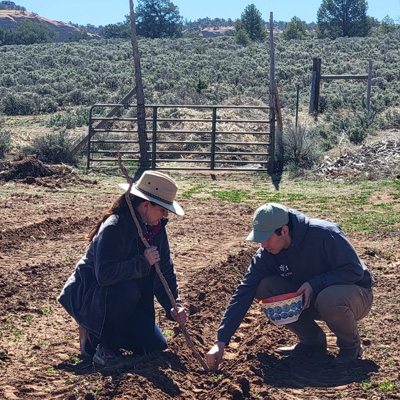
“He was including us in the ceremony that they would be doing before planting the corn. It was an incredible experience,” she said. “It was an honor for all of us to be a part of that.”
Ziedonis said he and his wife, who both have an interest in learning about Indigenous culture, were grateful to be welcomed into the Clark family home and witness the planting ceremony.
“There was this amazing balance of learning about their personal lives, the richness of their culture and how they bring it into day-to-day activities, going into the hoghaan, participating in ceremonies and learning about different practices,” Ziendonis said.
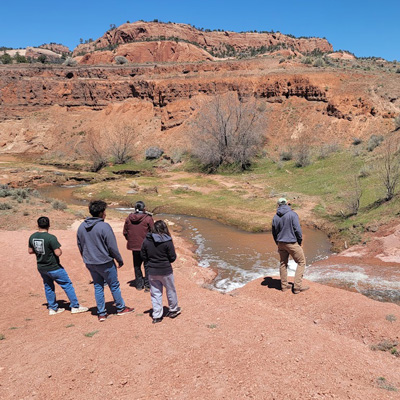
“The Clark family was so generous and kind and open to sharing their home,” he added.
One of the reasons Burton wanted to take students to various communities outside of Sandoval County was to have a wholly immersive learning experience.
An important part of those meetings, she said, was to help each UNM visitor to better understand perspective of the people they will serve, who describe often being subjected to stereotypes and overgeneralizations. “In health care, it’s often easy to overgeneralize,” she said. “One of the things I think my students gained through this program and through these experiences is deconstruction of overgeneralization of Indigenous communities. Each tribe and community are unique and have their own culture and it’s important to remember that.”
